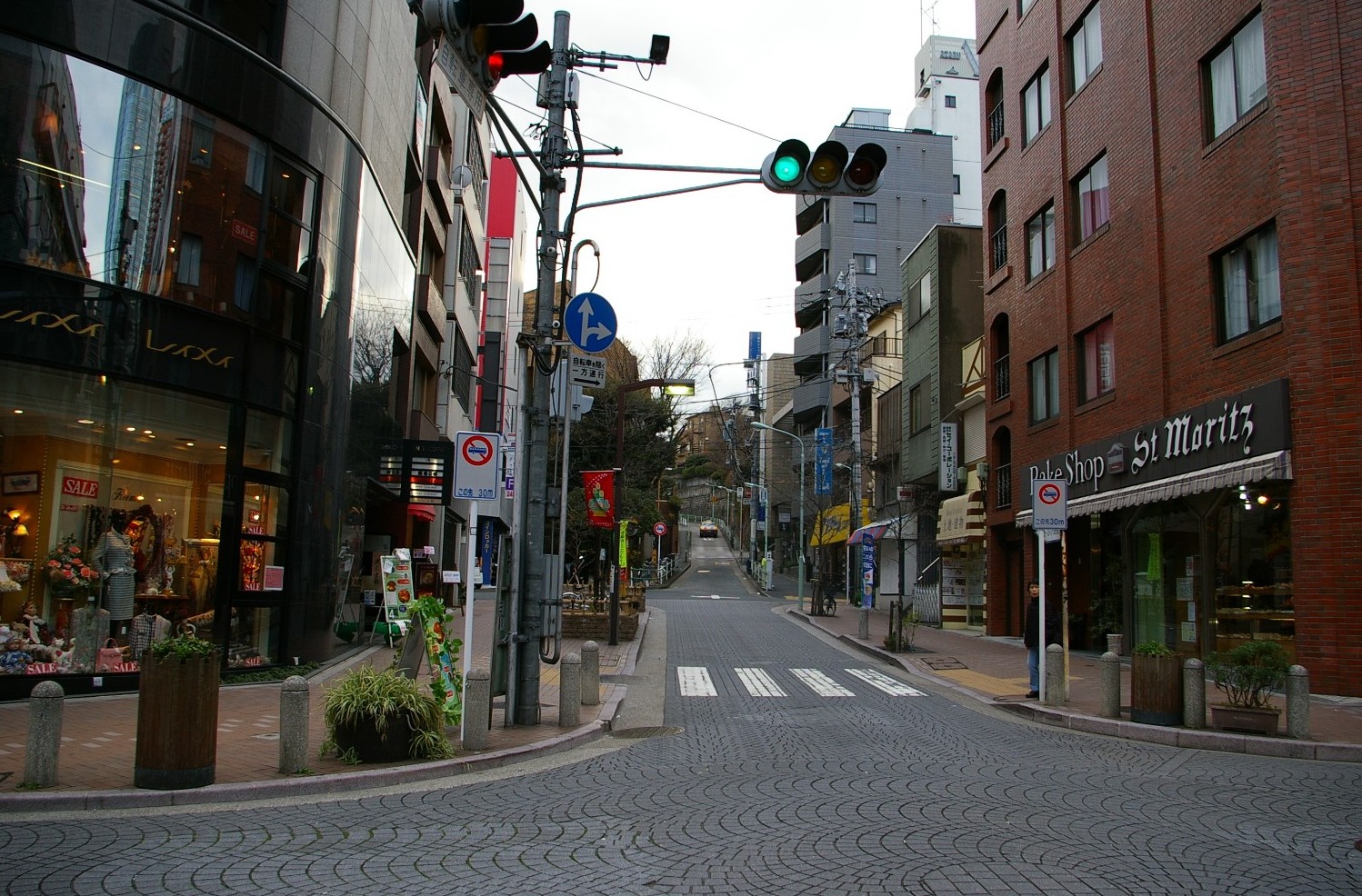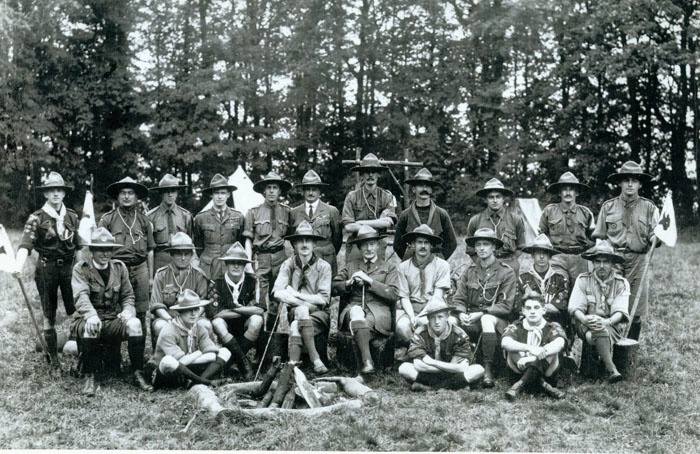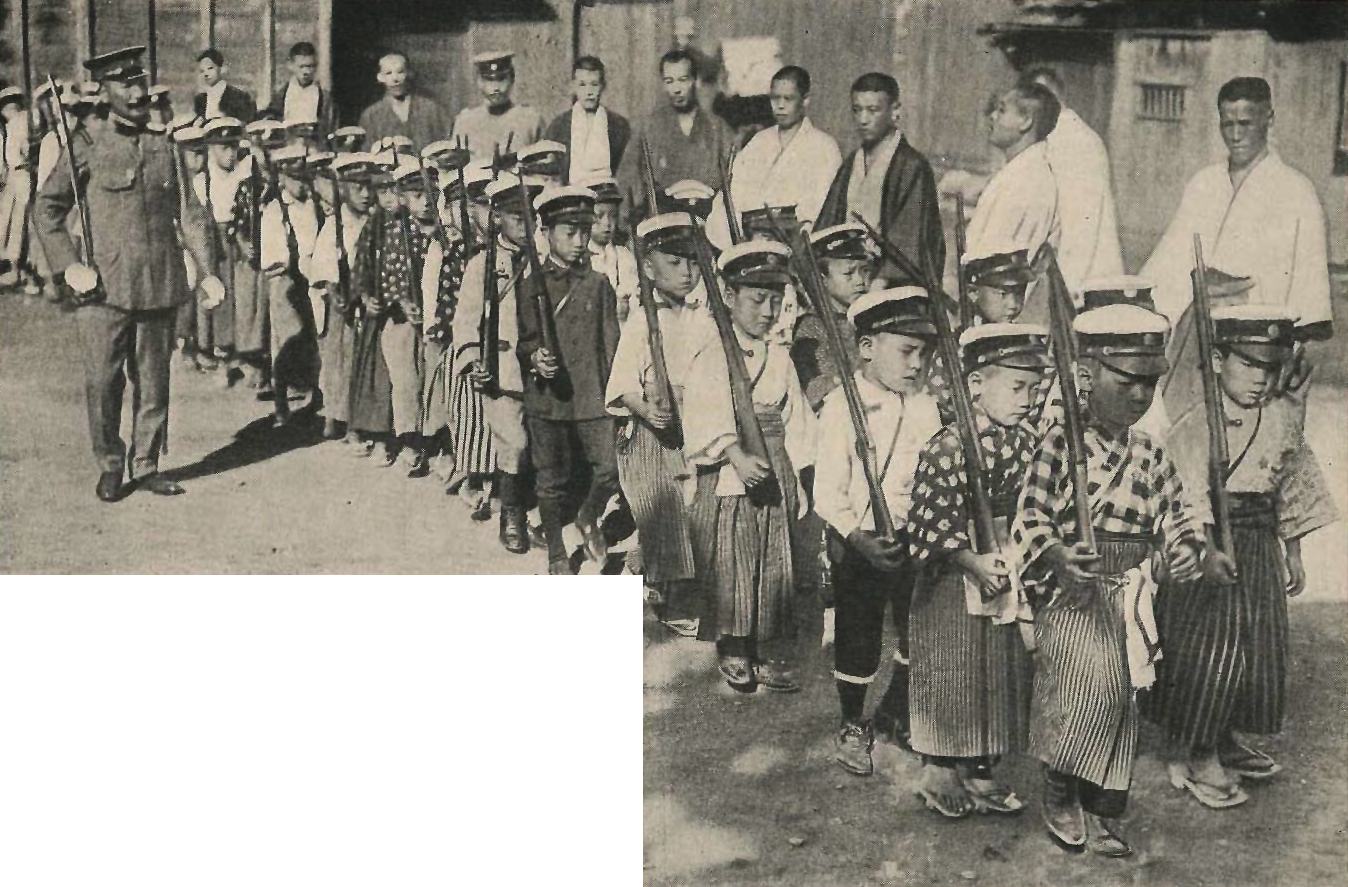|
Mishima Michiharu
was a novelist, playwright and drama critic. His pen name was Shōdō Mishima (三島 章道 ''Mishima Shōdō''). Early life Mishima was born in Azabu, Tōkyō, to an aristocratic family. His grandfather Michitsune Mishima had been ennobled as a viscount in the new Japanese nobility in 1884, while his father was Yatarō Mishima, the 8th Governor of the Bank of Japan. His mother was Marquis Takauta Shijō (四条 隆謌 ''Shijō Takauta'')'s third daughter, Kaneko (加根子), through whom he was related to the old court aristocracy and the greater Fujiwara clan. His younger sister was married to Yoshi Hijikata. He was a Peers School graduate, and succeeded his father as the third Viscount Mishima in 1919. Career Mishima was a member of the House of Peers and the House of Councillors and was parliamentary vice-minister to the Ministry of Education, Culture, Sports, Science and Technology. Scouting Mishima formed the nationwide ''Boy Scouts of Japan'' with Count F ... [...More Info...] [...Related Items...] OR: [Wikipedia] [Google] [Baidu] |
Azabu
is an area in Minato,Tokyo, Japan. Built on a marshy area of foothills south of central Tokyo, its coverage roughly corresponds to that of the former Azabu Ward, presently consisting of nine official districts: Azabu-Jūban, Azabudai, Azabu-Nagasakachō, Azabu-Mamianachō, Nishi-Azabu, Higashi-Azabu, Moto-Azabu and Roppongi. It is known as one of Tokyo's most expensive and upscale residential districts with many artists, business people, and celebrities residing there. It is also known for its large foreign population, due in part to a number of foreign embassies present in the area. History The name Azabu literally means hemp cloth. Until the early Edo period, the area was agricultural. Archaeological evidence indicates that the area was inhabited as far back as the Jōmon period. The Juban Inari shrine (formerly known as Takechiyo Inari) was constructed in AD 712, the temple of Zenpuku-ji in 824, and the Hikawa Shrine in 939 (on orders of Minamoto no Tsunemoto). Th ... [...More Info...] [...Related Items...] OR: [Wikipedia] [Google] [Baidu] |
Boy Scout Association Of Japan
The is the major Scouting organization of Japan. Starting with boys only, the organization was known as Boy Scouts of Japan from 1922 to 1971, and as Boy Scouts of Nippon from 1971 to 1995, when it became coeducational in all sections, leading to neutral naming. Scouting activity decreased radically during World War II but slowly recovered; membership at the end of May 2017 was 99,779.悲しいメールも1通届きました 平成29年度加盟員登録数(平成29年5月末現在) ●加盟員(1号会員) 団 数= 2,040団(対前年度▲62団) 加盟員数=99,779人(対前年度▲9,749人) (参考)4月末 加盟員98,676人(対前年度▲10,852人) History Early years Scouting was introduced to Japan in the autumn of 1909''Scouting 'Round the World'', J. S. Wilson, first edition, Blandford Press 1959 by ambassador Akizuki Satsuo and Japanese teacher Hōjō Tokiyuki (S ... [...More Info...] [...Related Items...] OR: [Wikipedia] [Google] [Baidu] |
Mainichi Shimbun
The is one of the major newspapers in Japan, published by In addition to the ''Mainichi Shimbun'', which is printed twice a day in several local editions, Mainichi also operates an English language news website called ''The Mainichi'' (previously ''Mainichi Daily News''), and publishes a bilingual news magazine, ''Mainichi Weekly''. It also publishes paperbacks, books and other magazines, including a weekly news magazine, ''Sunday Mainichi''. It is one of the four national newspapers in Japan; the other three are the ''Asahi Shimbun'', the ''Yomiuri Shimbun'' and the '' Nihon Keizai Shimbun''. The Sankei Shimbun and The ''Chunichi Shimbun'' are not currently in the position of a national newspaper despite a large circulation for the both respectively. History The history of the ''Mainichi Shinbun'' began with the founding of two papers during the Meiji period. The ''Tokyo Nichi Nichi Shimbun'' was founded first, in 1872. The ''Mainichi'' claims that it is the oldest existing ... [...More Info...] [...Related Items...] OR: [Wikipedia] [Google] [Baidu] |
World Organization Of The Scout Movement
The World Organization of the Scout Movement (WOSM ) is the largest international Scouting organization. WOSM has 173 members. These members are recognized national Scout organizations, which collectively have around 43 million participants. WOSM was established in 1922, and has its operational headquarters at Kuala Lumpur, Malaysia and its legal seat in Geneva, Switzerland. It is the counterpart of the World Association of Girl Guides and Girl Scouts (WAGGGS). The WOSM's current stated mission is "to contribute to the education of young people, through a value system based on the Scout Promise and Scout Law, to help build a better world where people are self-fulfilled as individuals and play a constructive role in society". WOSM is organized into regions and operates with a conference, committee and bureau. The WOSM is associated with three World Scout Centres. The World Scout Jamboree is held roughly every four years under the auspices of the WOSM, with members of WAGGGS also ... [...More Info...] [...Related Items...] OR: [Wikipedia] [Google] [Baidu] |
Bronze Wolf
The Bronze Wolf Award is bestowed by the World Scout Committee (WSC) to acknowledge "outstanding service by an individual to the World Scout Movement". It is the highest honor that can be given a volunteer Scout leader in the world and it is the only award given by the WSC. Since the award's creation in 1935, fewer than 400 of the several millions of Scouts throughout the world have received the award. History Scouting's founder, Robert Baden-Powell, initially recognized outstanding contributions to Scouting by any Scout with the bestowal of the Silver Wolf, but although he was Chief Scout of the World, the Silver Wolf was associated with British Scouting. In 1924, the International Committee, predecessor of the WSC, determined that it needed an award to be given out in its own name and at its own recommendation. Baden-Powell wanted to limit the number of awards, but recognized that the concerns of the committee were valid. Conversation about the matter was re-opened in 193 ... [...More Info...] [...Related Items...] OR: [Wikipedia] [Google] [Baidu] |
Kijishō
The is the highest award for adult leaders in the Scout Association of Japan. It is awarded by the Chief Scout of Japan, awarded for eminent achievement and meritorious service to the Association for a period of at least twenty years. It may be awarded to any member of a Scout Association affiliated with the World Organization of the Scout Movement. The award consists of a medallion depicting a stylized golden pheasant, suspended from a white ribbon with two red stripes worn around the neck. The attendant uniform emblem, worn over the pocket, consists of two red stripes on a white background with a 5 mm golden United States military award devices, device of the Japanese Scout emblem. Background The original Japanese list does not assign strict chronological numbering, rather by category. The first category is , and in honorific order as number 1 is the Heisei emperor, although he received the award chronologically third in that category. The second category are , again starting w ... [...More Info...] [...Related Items...] OR: [Wikipedia] [Google] [Baidu] |
Gilwell Park
Gilwell Park is a camp site and activity centre in East London located in the Sewardstonebury area of Waltham Abbey, within Epping Forest, near the border with Chingford. The site is owned by The Scout Association, is used by Scouting and Guiding groups. As the original base of leadership training in the Scout movement, it is an important site of the worldwide Scouting movement. In the late Middle Ages, the area was used as a farm, which grew to become to a wealthy estate that fell into disrepair around 1900. In 1919, Scout Commissioner William de Bois Maclaren bought the estate and gave it to The Scout Association to provide camping facilities for London Scouts and training for Scouters. Scout leaders from all countries of the world have visited Gilwell Park for their Wood Badge training. Gilwell Park is also host to Scout Adventures Gilwell Park, one of twelve national centres run by or in partnership with the Scout Association, including Downe, Youlbury. The site has a ... [...More Info...] [...Related Items...] OR: [Wikipedia] [Google] [Baidu] |
Wood Badge
Wood Badge is a Scouting leadership programme and the related award for adult leaders in the programmes of Scout associations throughout the world. Wood Badge courses aim to make Scouters better leaders by teaching advanced leadership skills, and by creating a bond and commitment to the Scout movement. Courses generally have a combined classroom and practical outdoors-based phase followed by a Wood Badge ''ticket'', also known as the project phase. By "working the ticket", participants put their newly gained experience into practice to attain ticket goals aiding the Scouting movement. The first Wood Badge training was organized by Francis "Skipper" Gidney and lectured at by Robert Baden-Powell and others at Gilwell Park (United Kingdom) in September 1919. Wood Badge training has since spread across the world with international variations. On completion of the course, participants are awarded the Wood Badge beads to recognize significant achievement in leadership and direc ... [...More Info...] [...Related Items...] OR: [Wikipedia] [Google] [Baidu] |
Chief Scout Of Japan
The is the major Scouting organization of Japan. Starting with boys only, the organization was known as Boy Scouts of Japan from 1922 to 1971, and as Boy Scouts of Nippon from 1971 to 1995, when it became coeducational in all sections, leading to neutral naming. Scouting activity decreased radically during World War II but slowly recovered; membership at the end of May 2017 was 99,779.悲しいメールも1通届きました 平成29年度加盟員登録数(平成29年5月末現在) ●加盟員(1号会員) 団 数= 2,040団(対前年度▲62団) 加盟員数=99,779人(対前年度▲9,749人) (参考)4月末 加盟員98,676人(対前年度▲10,852人) History Early years Scouting was introduced to Japan in the autumn of 1909''Scouting 'Round the World'', J. S. Wilson, first edition, Blandford Press 1959 by ambassador Akizuki Satsuo and Japanese teacher Hōjō Tokiyuki (S ... [...More Info...] [...Related Items...] OR: [Wikipedia] [Google] [Baidu] |
Nasuno Camping Grounds
The is a train service operated on the Tōhoku Shinkansen by East Japan Railway Company (JR East) in Japan. It serves all stations between and , a medium-sized city approximately 225 km north of Tokyo.JR Timetable, December 2008 Origin The name ''Nasuno'' is derived from the and areas located alongside the Tōhoku Shinkansen between Utsunomiya and Kōriyama. Operations There are approximately 16 return ''Nasuno'' trains daily, starting/terminating either at , Nasushiobara, or Kōriyama. ''Nasuno'' services stop at all stations en route. Double-decker ''Nasuno'' services formed of E4 series sets also operated up until September 2012, named ''Max Nasuno''. Rolling stock * E2 series (since March 1997) * E3 series (train), E3 series * E5 series (since November 2011) * E6 series (train), E6 series (since 16 March 2013)JR Timetable, March 2013 = * 200 Series Shinkansen, 200 series (June 1982 – November 2011) * E1 series (train), E1 series (''Max Yamabiko'') (July 199 ... [...More Info...] [...Related Items...] OR: [Wikipedia] [Google] [Baidu] |
Tochigi Prefecture
is a Prefectures of Japan, prefecture of Japan located in the Kantō region of Honshu. Tochigi Prefecture has a population of 1,943,886 (1 June 2019) and has a geographic area of 6,408 Square kilometre, km2 (2,474 Square mile, sq mi). Tochigi Prefecture borders Fukushima Prefecture to the north, Gunma Prefecture to the west, Saitama Prefecture to the south, and Ibaraki Prefecture to the southeast. Utsunomiya is the capital and largest city of Tochigi Prefecture, with other major cities including Oyama, Tochigi, Oyama, Tochigi, Tochigi, Tochigi, and Ashikaga, Tochigi, Ashikaga. Tochigi Prefecture is one of only eight landlocked prefectures and its mountainous northern region is a popular tourist region in Japan. The Nasu District, Tochigi, Nasu area is known for its onsens, local sake, and Skiing, ski resorts, the villa of the Imperial House of Japan, Imperial Family, and the station of the Shinkansen railway line. The city of Nikkō, Tochigi, Nikkō, with its ancient Shinto s ... [...More Info...] [...Related Items...] OR: [Wikipedia] [Google] [Baidu] |
West Nasuno
West or Occident is one of the four cardinal directions or points of the compass. It is the opposite direction from east and is the direction in which the Sun sets on the Earth. Etymology The word "west" is a Germanic word passed into some Romance languages (''ouest'' in French, ''oest'' in Catalan, ''ovest'' in Italian, ''oeste'' in Spanish and Portuguese). As in other languages, the word formation stems from the fact that west is the direction of the setting sun in the evening: 'west' derives from the Indo-European root ''*wes'' reduced from ''*wes-pero'' 'evening, night', cognate with Ancient Greek ἕσπερος hesperos 'evening; evening star; western' and Latin vesper 'evening; west'. Examples of the same formation in other languages include Latin occidens 'west' from occidō 'to go down, to set' and Hebrew מַעֲרָב maarav 'west' from עֶרֶב erev 'evening'. Navigation To go west using a compass for navigation (in a place where magnetic north is the same dir ... [...More Info...] [...Related Items...] OR: [Wikipedia] [Google] [Baidu] |






